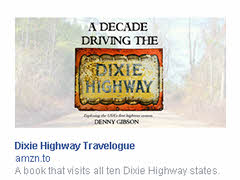 On Friday morning a friend observed on Facebook that he was getting email from every website he had ever visited that had something to sell. His situation was hardly unique. I’m rather confident that everyone with any sort of internet connection was seeing an uptick in activity on the official beginning of open season on customers. The barrage had been building as anxious hunters fired off emails and other communications telling us that their Black Friday started on Thursday or Wednesday or even earlier. This is, I assume, the same sort of time warp that allows certain drinking establishments to advertise “The world’s longest Happy Hour”. I considered emailing him some sympathy but didn’t for two reasons. One was that to do so would be to add to the tide of useless messages in his inbox. The other was that I would soon be part of the problem.
On Friday morning a friend observed on Facebook that he was getting email from every website he had ever visited that had something to sell. His situation was hardly unique. I’m rather confident that everyone with any sort of internet connection was seeing an uptick in activity on the official beginning of open season on customers. The barrage had been building as anxious hunters fired off emails and other communications telling us that their Black Friday started on Thursday or Wednesday or even earlier. This is, I assume, the same sort of time warp that allows certain drinking establishments to advertise “The world’s longest Happy Hour”. I considered emailing him some sympathy but didn’t for two reasons. One was that to do so would be to add to the tide of useless messages in his inbox. The other was that I would soon be part of the problem.
Not the email overload problem but the general advertising overload problem it is part of. In a way, I’m already part of the problem. I published my second book in early November and that apparently tripped some trigger at Amazon. I have seen occasional Amazon sponsored Facebook ads not only for the new book but also for my first book published nearly two years ago. I don’t know if anyone else ever sees these ads and it has occurred to me that perhaps the only place these ads appear is on my own Facebook pages in some strange scheme to impress me.
But even if those ads do show up elsewhere (and they sure aren’t generating a rush of orders) my involvement is indirect only. That changed yesterday when a limited ad campaign for the latest book was launched. The seed was planted several months ago when a friend told me about his experience with Facebook advertising. The pricing was reasonable and, although there was little hard evidence, his gut feel was that it had helped. He had used it to promote an event and one of Facebook’s biggest attractions to him was the ability to geographically target the ads rather precisely. That sort of geographic precision isn’t nearly as useful in pushing a book but there were other attractions and I decided to give it a try. I have no illusions of actually making money peddling paperbacks but writers do like to be read.
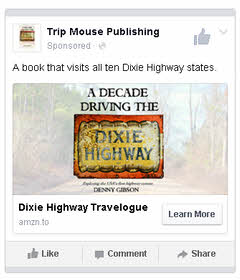 The image at the top of this article shows the ad that appears in what Facebook calls the “Desktop Right Column”. The one at left is for the “Mobile News Feed”. Other variations appear in other channels. As can be seen in the “News Feed” version, the ads are sponsored not by me but by Trip Mouse Publishing which has its own silly story.
The image at the top of this article shows the ad that appears in what Facebook calls the “Desktop Right Column”. The one at left is for the “Mobile News Feed”. Other variations appear in other channels. As can be seen in the “News Feed” version, the ads are sponsored not by me but by Trip Mouse Publishing which has its own silly story.
The “mouse” thing goes back many years to my dart playing days. We always tried to come up with clever team names though we rarely succeeded. What I think may have been the very last team I played on was called, in a fairly accurate indication of our accuracy, the Blind Mice. My participation in a CART (the guys who used to race at Indy) fantasy league overlapped the existence of the Blind Mice. I needed a team name when I signed up and, with mice on my mind, chose “Quick Mouse”. Years later I needed a user name for something and everything I submitted with pieces of my real name was refused. The site had something to do with travel and that prompted me to try TripMouse which was accepted. In 2013, when I was setting up the Create Space account for my first book, I had to indicate whether or not I wanted Create Space to appear as the publisher. I decided not but that meant I needed to say who and there was that somewhat appropriate TripMouse name laying around. Trip Mouse Publishing was born.
I used the name in establishing an account for paying Ohio sales tax on the few books I sold directly in state but it was otherwise an essentially imaginary company. As I created my Facebook ad, I was asked to set up a business page. Although this was presented as being optional, there were things that seemed to not work well or at all without it. After a few frustrating attempts to move on, I made a Trip Mouse Publishing Facebook page. I probably should have stopped right there but I decided that, if Trip Mouse was going to have a web presence, I wanted to have control of at least some of it. I set out to acquire a domain name. I was mildly surprised to find that someone already owned tripmouse.com but absolutely flabbergasted to see that they wanted $1895 for it. I have absolutely no idea why that is especially when both tripmouse.net and trip-mouse.com were available at 99¢ for the first year. For no logical reason, I opted for Trip-Mouse.com.
It has been many years since I’ve registered a new domain name and the world has changed. Identifying Trip Mouse Publishing as a small business on Facebook probably spilled a little blood in the water, too. The result is that in addition to all the absolutely astounding deals I’m being offered on TVs, books, phones, clothes, cameras, et cetera, et cetera, I’m getting equally astounding offers for logo design, web hosting, website creation, and more. I do feel a little guilty for adding to the commercial clutter of Facebook but with every offer of a half price premium turnkey website package the guilt diminishes just a little more.

 We fought a war to get this country going then gave every land owning white male above the age of twenty-one the right to vote. A little more than four score years later, we fought a war with ourselves that cleared the way for non-whites to vote. Several decades of loud, disruptive, and sometimes dangerous behavior brought the granting of that same right to non-males a half-century later and another half century saw the voting age lowered to eighteen after a decade or so of protests and demonstrations.
We fought a war to get this country going then gave every land owning white male above the age of twenty-one the right to vote. A little more than four score years later, we fought a war with ourselves that cleared the way for non-whites to vote. Several decades of loud, disruptive, and sometimes dangerous behavior brought the granting of that same right to non-males a half-century later and another half century saw the voting age lowered to eighteen after a decade or so of protests and demonstrations. Of course, putting something in a constitution does not automatically make it a practice throughout the land and I am painfully aware that resistance followed each of those changes and that efforts to make voting extremely difficult for “the other side” are ongoing today. I don’t want to ignore partisan obstructions and system flaws but neither do I want to get hung up on them. I meant my first paragraph to be a reminder that a hell of a lot of effort, property, and lives have gone into providing an opportunity to vote to a hell of a lot of people. Far too many of those opportunities go unused.
Of course, putting something in a constitution does not automatically make it a practice throughout the land and I am painfully aware that resistance followed each of those changes and that efforts to make voting extremely difficult for “the other side” are ongoing today. I don’t want to ignore partisan obstructions and system flaws but neither do I want to get hung up on them. I meant my first paragraph to be a reminder that a hell of a lot of effort, property, and lives have gone into providing an opportunity to vote to a hell of a lot of people. Far too many of those opportunities go unused. In the title I claim to not care how anyone votes. That’s not entirely true, of course. I have my favorite candidates and issues. I’ll be disappointed in anyone who votes differently than I do but not nearly as disappointed as I’ll be in anyone who doesn’t vote at all. I’m reminded of parents working on getting their kids to clean their plates with lines like, “There are hungry children in China who would love to have your green beans.” I’m not sure what the demand for leftover beans is in Beijing these days but I’m pretty sure some folks there would like to have our access to ballots and voting booths.
In the title I claim to not care how anyone votes. That’s not entirely true, of course. I have my favorite candidates and issues. I’ll be disappointed in anyone who votes differently than I do but not nearly as disappointed as I’ll be in anyone who doesn’t vote at all. I’m reminded of parents working on getting their kids to clean their plates with lines like, “There are hungry children in China who would love to have your green beans.” I’m not sure what the demand for leftover beans is in Beijing these days but I’m pretty sure some folks there would like to have our access to ballots and voting booths.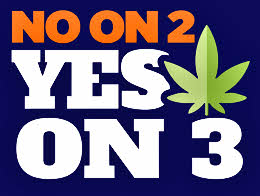 3 is the number assigned to the ballot issue on the legalization of marijuana in Ohio.
3 is the number assigned to the ballot issue on the legalization of marijuana in Ohio. FALSE – I am very much a disciple of Snopes.com but it never occurred to me to check this particular quote there. I should have. When someone referenced the quote on Facebook, the following was included as “also shared”. Thanks, Facebook.
FALSE – I am very much a disciple of Snopes.com but it never occurred to me to check this particular quote there. I should have. When someone referenced the quote on Facebook, the following was included as “also shared”. Thanks, Facebook. 
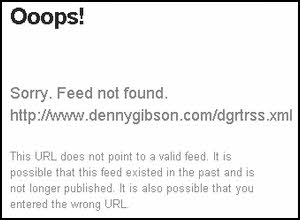 Nobody sees the trouble I’ve known. Maybe not nobody, exactly, but not many. There are two primary RSS feeds published by this site. One is for this blog. The other is for the trip journal. Among the many ways of subscribing to these feeds is a service called
Nobody sees the trouble I’ve known. Maybe not nobody, exactly, but not many. There are two primary RSS feeds published by this site. One is for this blog. The other is for the trip journal. Among the many ways of subscribing to these feeds is a service called 



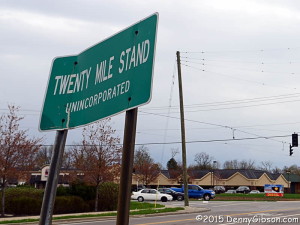








 Sometimes hordes of fans demand an e-book version of a publication which prompts the publisher to pull out all the stops and produce one immediately. Sometimes one or two people casually ask about an e-book version and probably forget about it by the time one appears a year or so later. One of these sentences describes my situation perfectly.
Sometimes hordes of fans demand an e-book version of a publication which prompts the publisher to pull out all the stops and produce one immediately. Sometimes one or two people casually ask about an e-book version and probably forget about it by the time one appears a year or so later. One of these sentences describes my situation perfectly.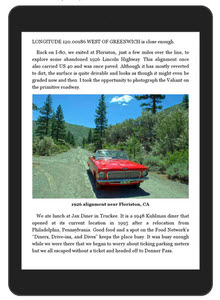 Other than correcting a couple of spelling errors, absolutely no text was changed in generating the e-book. The same pictures are in the e-book as in the paperback with essentially the same dimensions. I did utilize color versions so they ought to look a little prettier on some devices. To make things reflowable, I unhooked the pictures and their captions from fixed positions on the pages and placed them between paragraphs. If you think of the sizing and positioning of a book’s non-text elements within the text as design, then what I did was undesign the book. To be honest, there wasn’t very much “design” in it. I placed pictures where I thought they looked good and I chose sizes to spotlight those I particularly liked or to allow some to be grouped together. Design is too kind a word. At best what I did was layout. I arranged some block images so that they looked alright, appeared near any text that referenced them, and didn’t disrupt that text too much. But other books truly are designed and their designers agonize over scaling and placing elements so that a page — a physical page with fixed dimensions — looks good and works well. That sort of design is no better accommodated in the e-reader world than my clunky picture layouts.
Other than correcting a couple of spelling errors, absolutely no text was changed in generating the e-book. The same pictures are in the e-book as in the paperback with essentially the same dimensions. I did utilize color versions so they ought to look a little prettier on some devices. To make things reflowable, I unhooked the pictures and their captions from fixed positions on the pages and placed them between paragraphs. If you think of the sizing and positioning of a book’s non-text elements within the text as design, then what I did was undesign the book. To be honest, there wasn’t very much “design” in it. I placed pictures where I thought they looked good and I chose sizes to spotlight those I particularly liked or to allow some to be grouped together. Design is too kind a word. At best what I did was layout. I arranged some block images so that they looked alright, appeared near any text that referenced them, and didn’t disrupt that text too much. But other books truly are designed and their designers agonize over scaling and placing elements so that a page — a physical page with fixed dimensions — looks good and works well. That sort of design is no better accommodated in the e-reader world than my clunky picture layouts.

 When days on the road increase, an increase in pictures posted is sure to follow. Last year an additional twenty road days yielded an additional 557 road trip pictures. 35% more days resulted in 54% more photos. Blog pictures decreased slightly. In addition to the 52 regular weekly blog posts, there were 16 reviews, 7 road trip links, and 5 miscellaneous asynchronous posts. The number two and three blog posts from 2013 moved up to one and two. Last year’s most visited post stayed in the top five at number four leaving just two of the top five slots for new posts. The most popular item posted in 2014 was the review of an ebook.
When days on the road increase, an increase in pictures posted is sure to follow. Last year an additional twenty road days yielded an additional 557 road trip pictures. 35% more days resulted in 54% more photos. Blog pictures decreased slightly. In addition to the 52 regular weekly blog posts, there were 16 reviews, 7 road trip links, and 5 miscellaneous asynchronous posts. The number two and three blog posts from 2013 moved up to one and two. Last year’s most visited post stayed in the top five at number four leaving just two of the top five slots for new posts. The most popular item posted in 2014 was the review of an ebook.